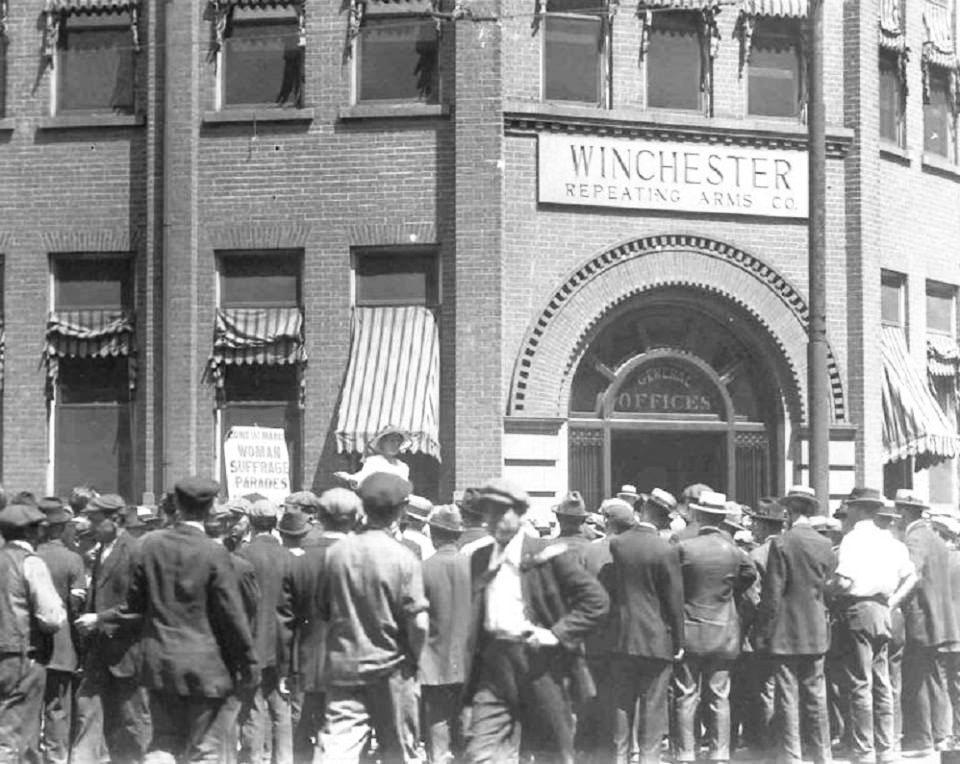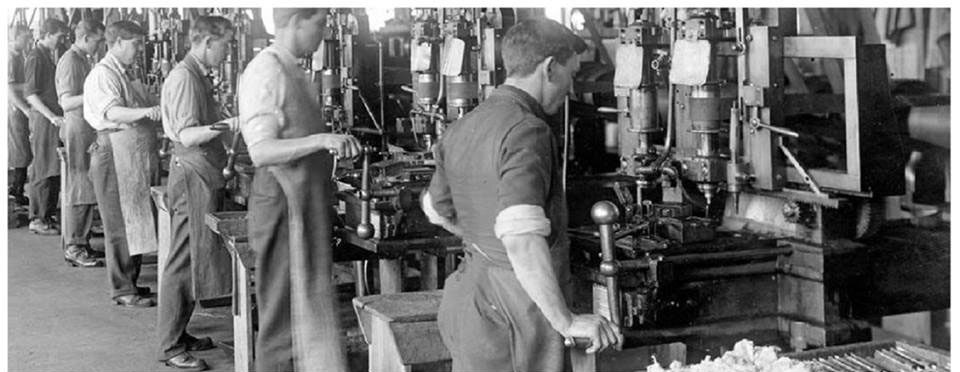By Dan Shine
Voice Columnist

Winchester Repeating Arms Co.
Part II
Beginning in 1883, John Browning worked in partnership with the Winchester Repeating Arms Company to design a series of rifles and shotguns, including the models 1886, 1892, 1894 and 1895 rifles; some of these designs are still in production today by other manufacturers.
The Twentieth Century brought with it a number of large-scale military conflicts which resulted in sizeable manufacturing contracts with United States and foreign entities. Winchester produced large numbers of the M1903, M1917, the Enfield M1914, the Browning Automatic Rifle, and the Browning .50 caliber machine gun. All of this massive production necessitated large scale facility expansion and massive borrowing. As the hostilities of The Great War drew to a close and contracts dried up, Winchester spent the next decade fighting to stay solvent. Finally in 1931 Winchester went into receivership, and was bought at bankruptcy auction by the Olin family’s Western Cartridge Company on December 22 of that year. In 1935, Winchester became Winchester-Western Company and began to rebuild under a new management that recognized the considerable market for sporting arms.

By 1939, war once again was looming on the horizon and Winchester set up tooling to fill an order for 65,000 M1 Garand rifles for the US Military. During the war, Winchester built more than half a million of these weapons, of which General George S. Patton is quoted as stating, “In my opinion, the M1 Rifle is the greatest battle implement ever devised.”
In 1941, with the sneak attack of Pearl Harbor just weeks away and concurrently Germany’s declaration of war against the United States, Winchester developed the M1 Carbine and a specially matched cartridge. They would build over 800,000 of these lightweight shoulder weapons which found widespread use by infantrymen, marines and paratroopers. During this period, Winchester was like a city unto itself, employing over 60,000 workers.
In the post-WWII years, Winchester produced the M14 rifle—essentially an enhanced Garand rifle–which saw use in the Vietnam conflict.
By the 1960s, the rising cost of skilled labor made it increasingly unprofitable to produce Winchester’s classic designs, which required a considerable amount of hand work to finish. Labor costs continued to rise throughout the 1960s and 1970s and a prolonged and bitter strike in 1979-1980 convinced Olin that firearms could no longer be produced profitably in New Haven. Winchester was sold to the employees, and it went bankrupt in 1989; it was then acquired by a French holding company. Renamed US Repeating Arms Company, it struggled onward until finally closing its doors in 2006, after a 140 year run.
What does The Boy remember about Winchester? Well, his maternal grandfather Henry Chapin was the foreman of the Winchester machine shop during WWII, and retired in 1960. Every year, he would present his grandson with a Winchester wall calendar, which always portrayed a dramatic hunting scene. Father, a chemical engineer worked as a manager across the street from Winchester, in what Olin referred to as the K Tract, and bordered the New Haven Railroad’s Canal Line. Just across the railroad tracks from father’s office was the Winchester Clubhouse, with its restaurant upstairs and its rifle range located in the basement. It was there that The Boy learned gun safety and marksmanship, firing the heavy-barreled Winchester 52 target rifles. Later on, The Boy would join the West Haven High School Rifle Club and practice shooting on that range in the afternoons after school let out.
Today, Winchester Repeating Arms Historic District remains as a vestige and a reminder of the factory and surrounding neighborhood homes and tenements, for Winchester lives on in the memories of the many people whose families found good-paying rewarding work at a family-oriented manufacturing organization.
Special thanks to Dorothy White Gemmell for her generous help with this story.